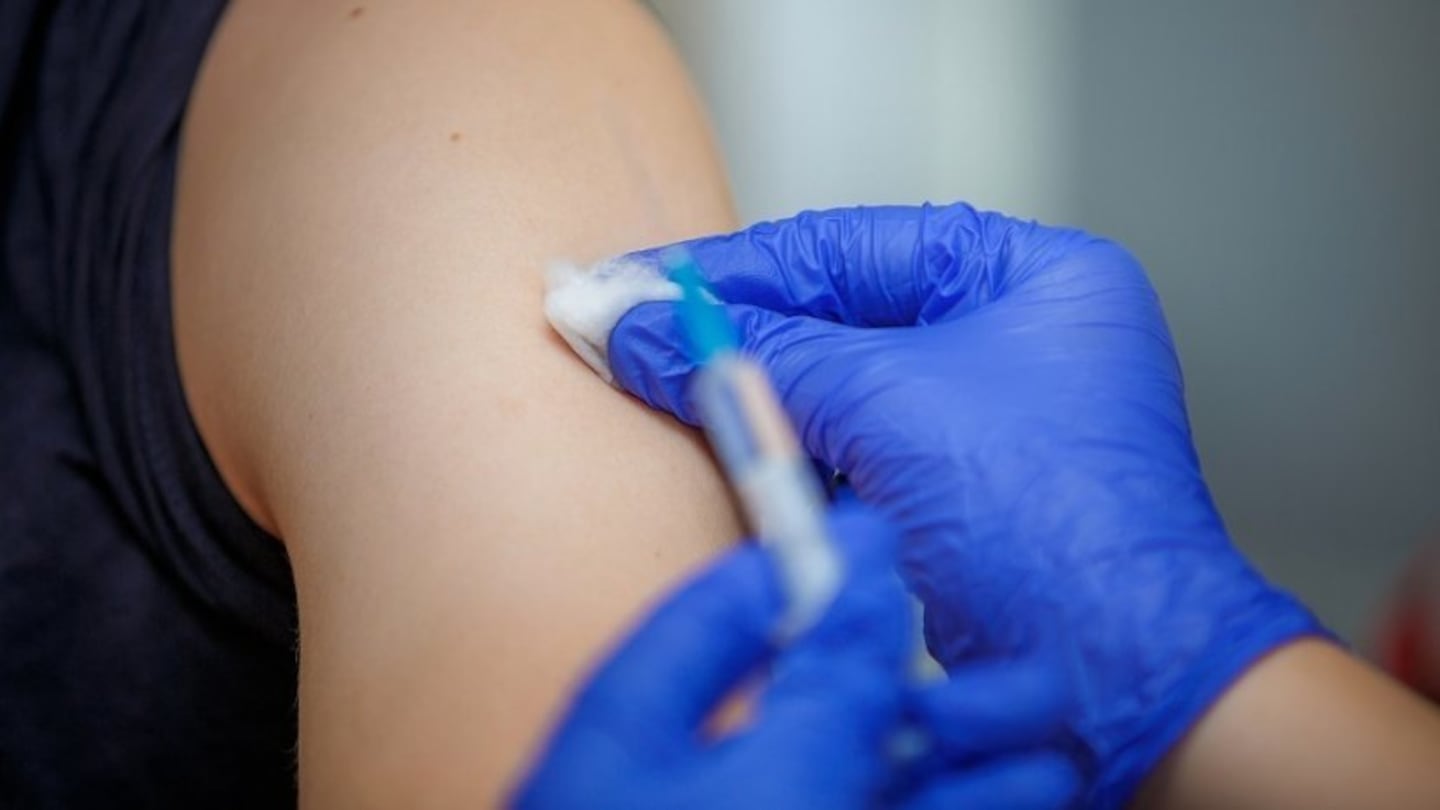There are calls to move the responsibility for giving childhood immunisations away from GPs and into the hands of whānau and community organisations in a bid to lift low and declining rates for Māori and Pacific children.
The latest data from the Ministry of Health shows that just 47% of pēpi Māori are fully vaccinated at six months – a drop of 17 percentage points since March 2020.
Across all ethnic groups, about two-thirds of six-month-olds are fully vaccinated.
Dr Owen Sinclair (Te Rarawa), acute lead of paediatrics for Te Whatu Ora Waitematā, said the problem was a “ticking time bomb” and a “disaster waiting to happen”.
A baby having their six-week immunisations done on time was the single biggest predictor of them having the rest of their immunisations on schedule.
“To put it bluntly, the reason that Māori rates are so low is because they can’t get immunised. The problems are systemic and it’s related to how the immunisation system works in New Zealand, underpinned with a big dose of systemic racism,” Sinclair said.
Baby red tape
To get their child immunised, parents must register them with a GP.
To do that they need a stable address and phone number – and even with these things it isn’t always easy to register, as many primary care clinics have closed their books to new patients because they’re struggling to keep up with demand.
If they can get an appointment, they then need reliable transport to get them there at a time that suits the vaccinator.
Māori whānau are less likely than other demographics to have access to address, communication and transport security, said Sinclair, who chaired the Immunisation Taskforce.
Immunisation rates have also broadly fallen for Pacific babies.
Three years ago, nearly 95% of one-year-olds from Pacific backgrounds were fully immunised – a higher proportion than for New Zealand Europeans. But now, the rate for New Zealand European one-year-olds is five percentage points higher than that of Pacific children, which sits at 81%.
Meet family needs
To lift rates, the immunisation system needed to move away from general practice and be designed around the needs of the family. One solution Sinclair put forward was to set up drop-in centres at places where families regularly went – like the shopping centre or supermarket.
He also wanted to see an entity established to oversee childhood immunisation. Currently, there was no one organisation in charge. Instead, it was left up to individual GP clinics to chase up unimmunised patients and get them jabbed. While some did a good job, others were letting people slip through the cracks.
A report in 2022, commissioned by the then-Capital & Coast and Hutt Valley health boards, into factors that influenced decisions around vaccinations for Māori and Pacific whānau found their previous experiences with the health system – positive or negative – played a big role.
Many of those interviewed for the paper spoke highly of both drop-in centres and outreach services that did immunisations at whānau homes.
'Not surprising' stats
Tairāwhiti (Gisborne)-based Dr Jason Tuhoe (Hauraki, Ngāpuhi, Ngāti Pikiao) chairs Te Akoranga a Māui, the Royal New Zealand College of GPs’ Māori representative group.
He labelled the latest immunisation statistics “tragic” but “not surprising”.
Tuhoe said while many Māori community organisations could help support their local people to be immunised, as had been seen during the Covid-19 vaccination roll-out, the problem was not theirs alone to solve and they needed adequate funding and resources to do this mahi.
“This is a New Zealand issue. This is an Aotearoa issue.”
Taking the responsibility for childhood immunisations away from GPs was an idea that needed serious consideration, especially considering the challenges with staffing shortages in the sector.
However, he was “mindful” of the relationships and trust many GPs had built with whānau over many years, or even generations, and how this could help them guide patients in making decisions about preventative health measures, like vaccination.
He agreed with Sinclair that more governance was needed in the immunisation system.
'Left behind'
University of Otago at Wellington associate professor and immunologist Dianne Sika-Paotonu said the pandemic had exacerbated significant pre-existing inequities for Māori and Pacific people and highlighted the need for equity-based approaches to vaccination, to meet different groups’ needs and reduce barriers to access.
“One-size fits-all” approaches that have dominated in the past, have benefited many, but can often leave behind those most in need of help and assistance, particularly at the time when help is needed.”
Te Whatu Ora – Health New Zealand’s interim director prevention Astrid Koornneef acknowledged the “significant equity gap for tamariki Māori” for vaccinations required urgent attention.
That was why the organisation was hiring “Vaccinating Health Workers” – non-clinical health workers to administer vaccines under clinical supervision. More than 40% of those in these new roles were Māori, Koornneef said in a statement.
Te Whatu Ora was also working to identify who needed to be immunised and providing them with immunisation services. As well, it was supporting Well Child Tamariki Ora providers to offer immunisations.


